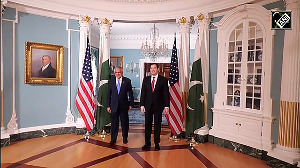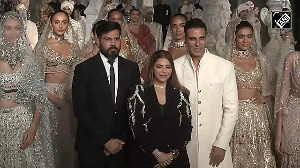Sustained economic growth in the last 15 years is now beginning to create several layers of customer segments. While a lot has been written about the growth of the middle class, not enough has been analysed and discussed about the emergence of a new "very affluent" class.
Perhaps we are still shy of celebrating the creation of wealth and publicly acknowledging and applauding the large (and growing) number of the new rich. My company Technopak made its maiden attempt in 2006 to estimate the numbers of these new super-rich households (defined as households with an annual income of Rs 40 lakh or more).
At the end of 2007, the number of such households will be about 1.8 million and the number of consumers in such households will exceed 6 million. The chief earners in such household are 35 years old or more, and almost one-third of them have both men and women with strong professional qualifications. About 70% of such households are engaged in businesses, while as many as 20% now comprise professional executives.
Most of the remaining 10% are self-employed professionals such as doctors, lawyers, and entertainers. Conspicuous by a near absence (less than 1%) from this group of the very rich are the erstwhile royalty, models, and most of the other usual page-3 suspects that typically include wannabe designers, so-called socialites, loud-mouthed admen, peddlers of imported wine and tobacco, and faded or fading film stars.
These rich households are now splurging on a very wide range of goods and services that include entertainment electronics, clothes and accessories, jewellery, watches and pens, automobiles, housing, furniture and furnishings, and gourmet food and wine--just to mention a few prominent product categories. It is therefore no surprise that marketers of such premium and luxury products are making a beeline to India from different parts of the world.
Unfortunately, the purveyors of premium and luxury goods have many challenges in India. The most critical of these is a near absence of quality retail space suitable to house such brands. A related challenge is the virtual absence of premium department stores like Selfridges or Saks Fifth Avenue, which forces most would-be entrants to seek their own retail outlets or, at best, bid for the already exorbitant and very scarce space at a few five-star hotels in select metros.
Marketers of wine, other types of alcohol and food have an even tougher time with severe restrictions on what, when and where they can vend. Faced with these obstacles, one of the most frequently used brand awareness creation and brand-building techniques is to host events that usually include fashion shows, sponsored live entertainment shows including drama and musical events, cocktail/wine receptions, and, more recently, affiliating with select "sports" such as polo.
While the rationale and the potential benefit from such an exercise are not questionable (by and large), the actual impact either in creating the desired appreciation and aspiration for these brands or in translating such aspiration into actual sales is minimal. Actual figures are hard to come by, but few major luxury brands in India barring Luis Vuitton (and maybe one or two others) have hit even the double-digit crore (Rs billion) revenue mark. Most brands (or rather, their starry-eyed Indian franchisees) continue to bleed money with no end in sight in near future.
In my view, the reasons are not too hard to fathom. It starts with a highly misplaced understanding of the luxury goods marketers of who should the targeted customers be.
Most continue to have the notion that these are still the scions of the erstwhile royalty and old Indian business families, film stars, wheeling-dealing politicians and their fixers that comprise the rich and the famous. It is eminently visible in the guest list one gets to see (occasionally) in person or (frequently) in the media where there is a predominance of this smaller-than-1% of the overall universe of the affluent in India.
While some Indian designers can still make their ends meet by "designing" a lehenga or a sherwani for high-profile weddings in the families of Indian steel magnates, diamond merchants, and media moguls, couturiers from Milan and Paris have no such luck.
What can international luxury goods and services marketers do to stimulate desire and capture the now rapidly increasing spending potential of the very affluent in India? They should start with an investment of time, effort, and some money in getting a sharper focus on the segments that comprise these 1.8 million affluent households.
Once these have been identified, focused effort has to be made to reach out to them, using a combination of invitees to select launch and promotion events; direct mailing (fortunately, there is an increasingly greater number of such households who have no reason to hide their affluence and hence can be identified through conventional means such as premium credit card data, premium automobile registration data, frequent flyer data culled intelligently from select airlines etc.); and focused but more mainstream advertising since many of the current affluent are actually first-time affluent and hence need to be influenced de novo.
As far as professional party goers (and their dime-a-dozen "PR" agents) are concerned, they should check out the joy of buying their own wine and cheese and food--it can actually be fun!







